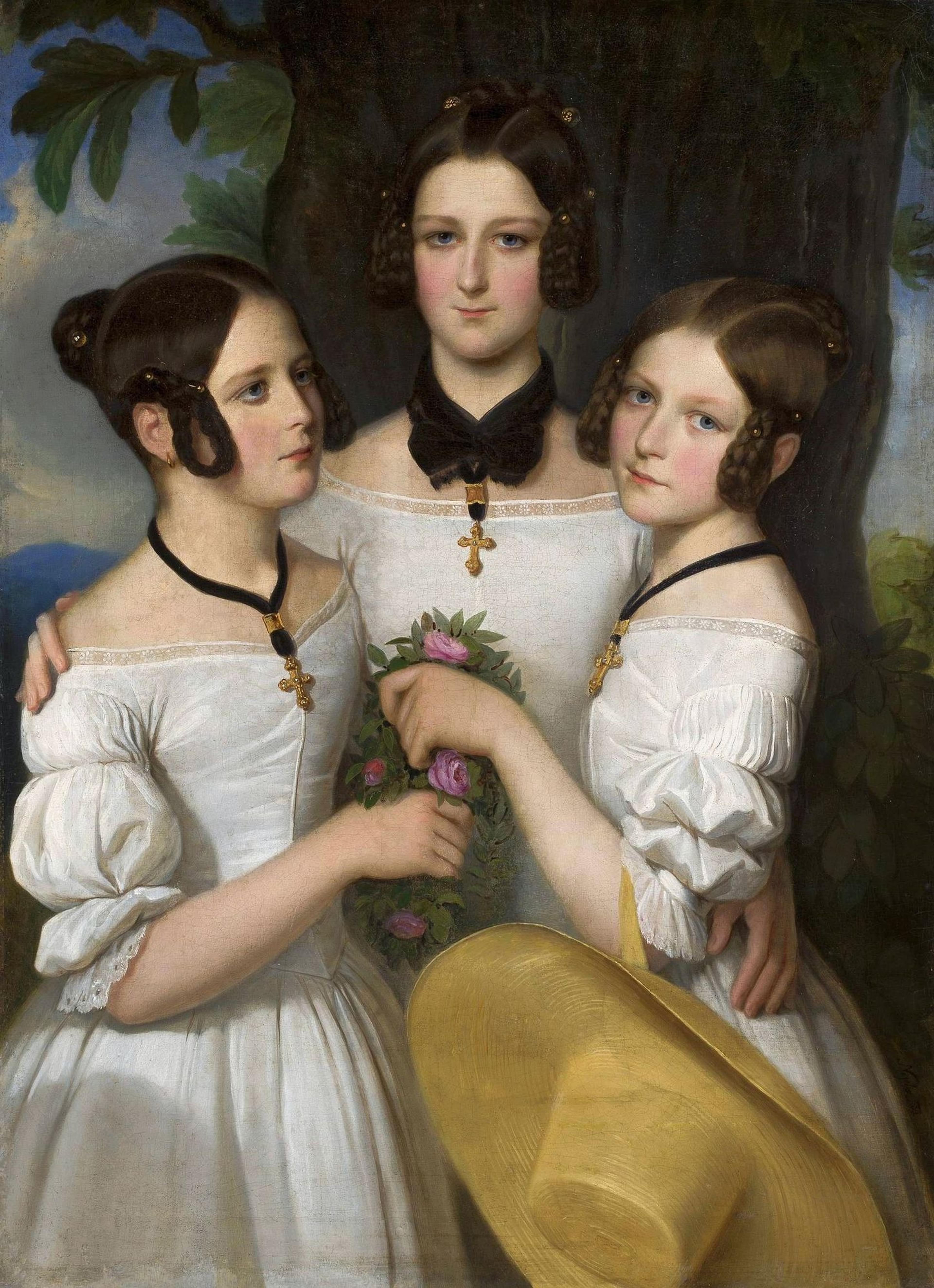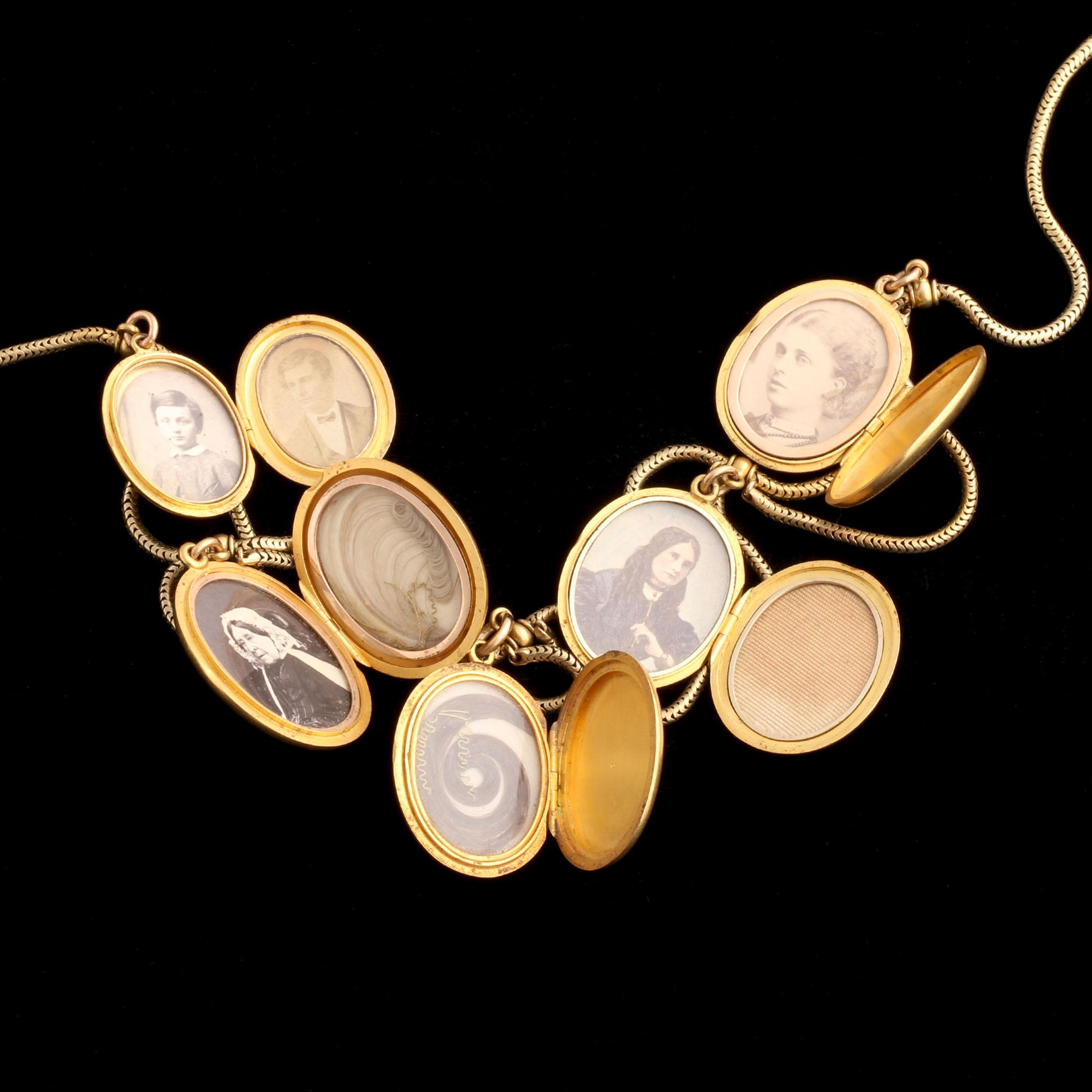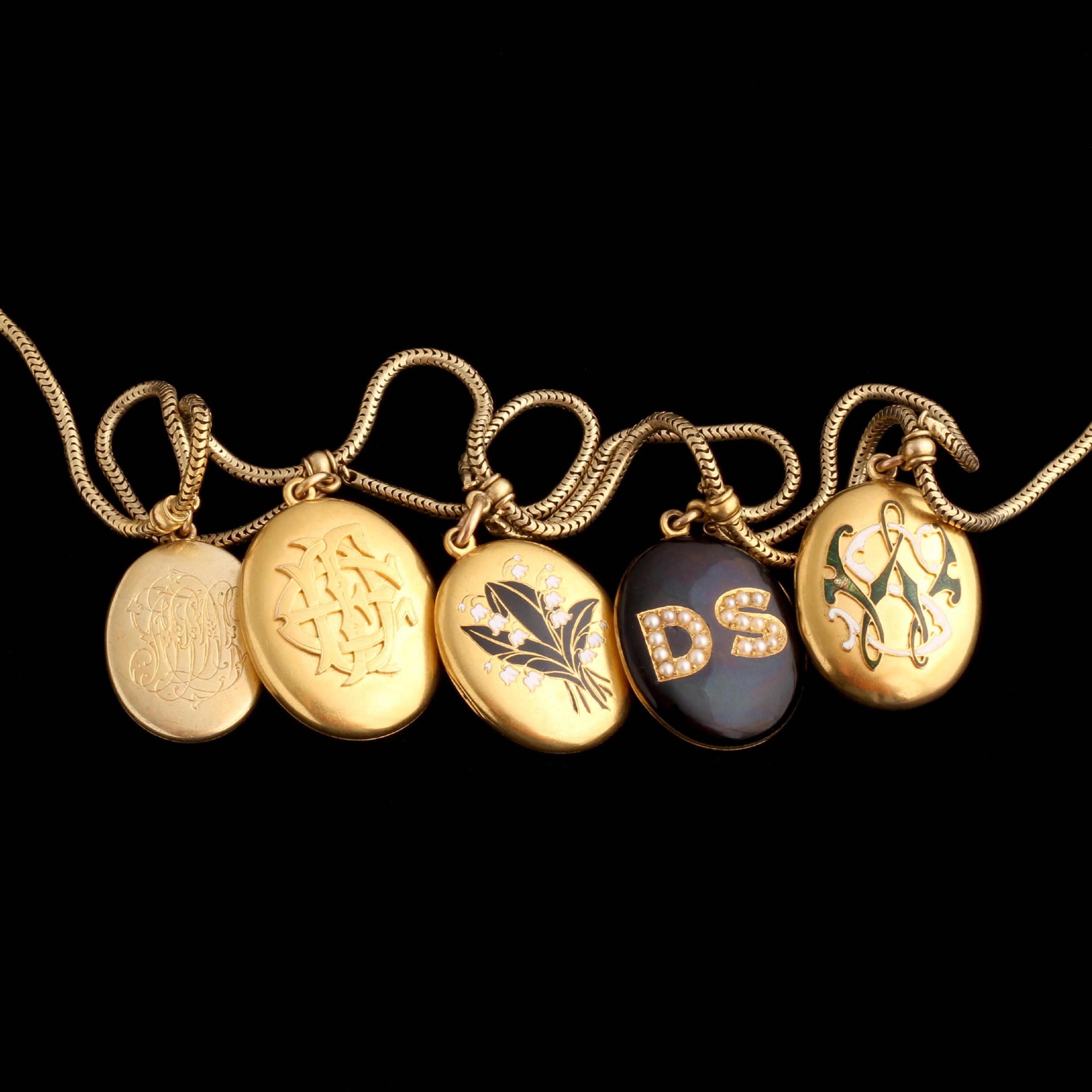A memory dump of loved ones, all carefully stored in meaningful matching (yet not matching) lockets. To be worn as a celebration. We don't know who they were, but their ghosts are gilded.
thedetails
- Materials
14k gold chain and lockets (all test), enamel, seed pearls, glass, hair
- Age
c. 1880
- Condition
Very good - some small losses to a few chain links, SW locket has some enamel loss and a little ding on the back side
- Size
17" length, lockets range from 1 1/4" to 1 1/2" length including the bale, swags hang about an inch down from the chain
1 1/4" length with bale Oval plain with monogram ATD (?) cross engraved on the reverse with photos of a boy and a young man (hot!)
1 1/2" length with bale Oval with monogram in relief EDF, back side is plain, photo of an older woman and a hair locket
1 1/2" length with bale Oval locket with black and white enamel lilies of the valley, back side has black enamel garter with In Memoriam along the top and a cross at the center, hair locket
1 3/8" length with bale Oval black enamel locket with seed pearl initials DS, plain back, hand colored photo of a woman with dark hair
1 1/2" length with bale Oval locket with green and white enamel SW monogram in relief, photo of a young woman (visible dent on the back side)
Need more photos?
Send us an email to request photos of this piece on a model.

Aboutthe
VictorianEra
1837 — 1901
The Victorians were avid consumers and novelty-seekers, especially when it came to fashion, and numerous fads came and went throughout the 19th century. In jewelry, whatever fashion choices Queen V. made reverberated throughout the kingdom. The Romantic period reflected the queen’s legendary love for her husband, Albert.
Jewelry from this period featured joyful designs like flowers, hearts, and birds, all which often had symbolic meaning. The queen’s betrothal ring was made in the shape of a snake, which stood for love, fidelity, and eternity. The exuberant tone shifted after Prince Albert passed away in 1861, marking the beginning of the Grand Period. Black jewelry became de rigeur as the Queen and her subjects entered “mourning,” which at the time represented not just an emotional state, as we conceive of it today, but a specific manner of conduct and dress. She wore the color black for the remainder of her life, and we see lots of black onyx, enamel, jet, and gutta percha in the jewelry from this time. Finally, during the late Victorian period, which transitioned along with a rapidly changing world into the “Aesthetic Movement”, there was a return to organic and whimsical motifs: serpents, crescent moons, animals, and Japonaisserie designed for the more liberated “Gibson Girl”. During the second half of the 19th century, America entered the global jewelry market, with Tiffany and Co. leading the way. Lapidaries continued to perfect their techniques, and the old European cut emerged toward the end of the Victorian period. The discovery of rich diamond mines in South Africa made the colorless stones more accessible than ever before.
please note:Terms of Sale
Antiques can be returned unworn and in original condition within 10 days of delivery for an exchange or refund minus the cost of shipping. Once a piece has been altered, including ring re-sizing, it is FINAL SALE.






